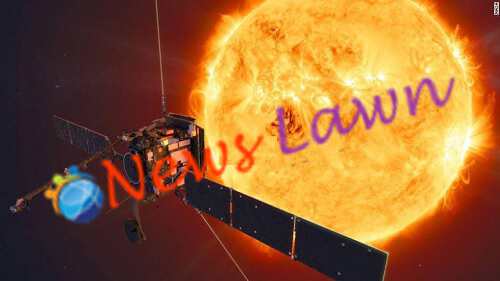A joint collaboration between the National Aeronautics and Space Administration (NASA) and the European Space Agency launched the Solar Orbiter from Cape Canaveral at 11:03 p.m. ET on Sunday.

On 10th February 2020, NASA has confirmed the Solar Orbit launch video through its official social media platform Twitter.
Here is the launch video posted by NASA on Twitter
3-2-1 LIFTOFF! 🚀 We have liftoff of #SolarOrbiter at 11:03pm ET atop @ULAlaunch’s #AtlasV rocket as the spacecraft begins its journey to snap the first pictures of the Sun’s north and south poles. Watch: https://t.co/W3wMEfPxvB pic.twitter.com/0F6Jk6vhML
— NASA (@NASA) February 10, 2020
About the mission
Solar Orbiter began its journey to explore at Earth’s only star, SUN. This is the first mission to explore the north and south poles of which are above and below the Sun. It is expected to reach the Sun’s orbit about two after the launch.
Solar Orbiter is the successor of Ulysses spacecraft launched in 1990 which flew over the Sun’s poles and ended its journey by 2009. It is a seven-year mission and can approach within 26 million miles near to Sun. It can endure temperatures up to 970° F.
Solar Orbiter is equipped with 10 instruments which can capture
- observations about the corona of the Sun.
- magnetic fields
- solar wind
- energized stream of particles that are emitted by the sun
- more encompassing observations
- unlock the mysteries of the sun
- the reasons for changes in space weather due to the sun’s magnetic field and solar wind
Out of the 10 instruments, 5 instruments will be stationed behind the Sun’s heat shield. They are designed to block the heat through tiny windows. 1 instrument will be placed on one side of the orbiter to watch and stream of the solar wind. These 6 instruments together will act as remote sensing devices to the Solar Orbiter and act as image providers. Mapping of the Sun, corona and its magnetic fields in different wavelengths of light, like ultraviolet, visible light and X-rays can be observed with the help of these instruments.
Also, read: ISRO’s Humanoid ‘Vyom Mitra’ Ready For Gaganyaan Mission
Remaining 4 instruments will be acting like the ‘touching’ the environment around the spacecraft in situ. These instruments include an Energetic Particle Detector, Magnetometer, Solar Wind Analyzer Suite, Plasma Waves and Radio Waves.
Uses of Solar Orbiter Spacecraft
- For forecasting space weather events
- For an accurate model of the sun’s global magnetic field
- For observing sun’s magnetic field changes
- Helpful for the reasons of interference by Sun’s magnetic field and solar wind that affects the networked systems like GPS, communications
- Astronauts on the International Space Station
